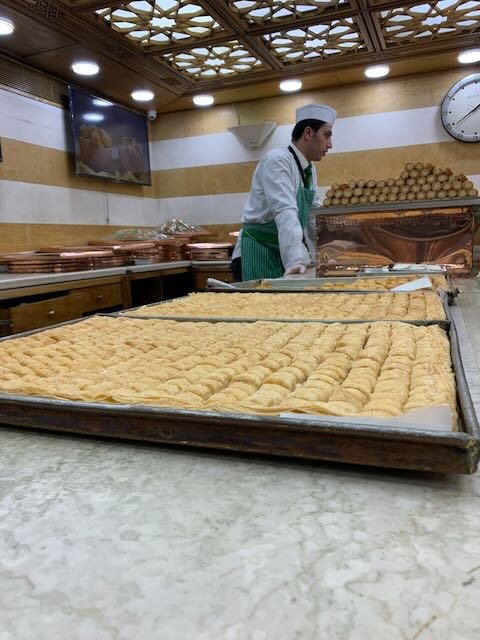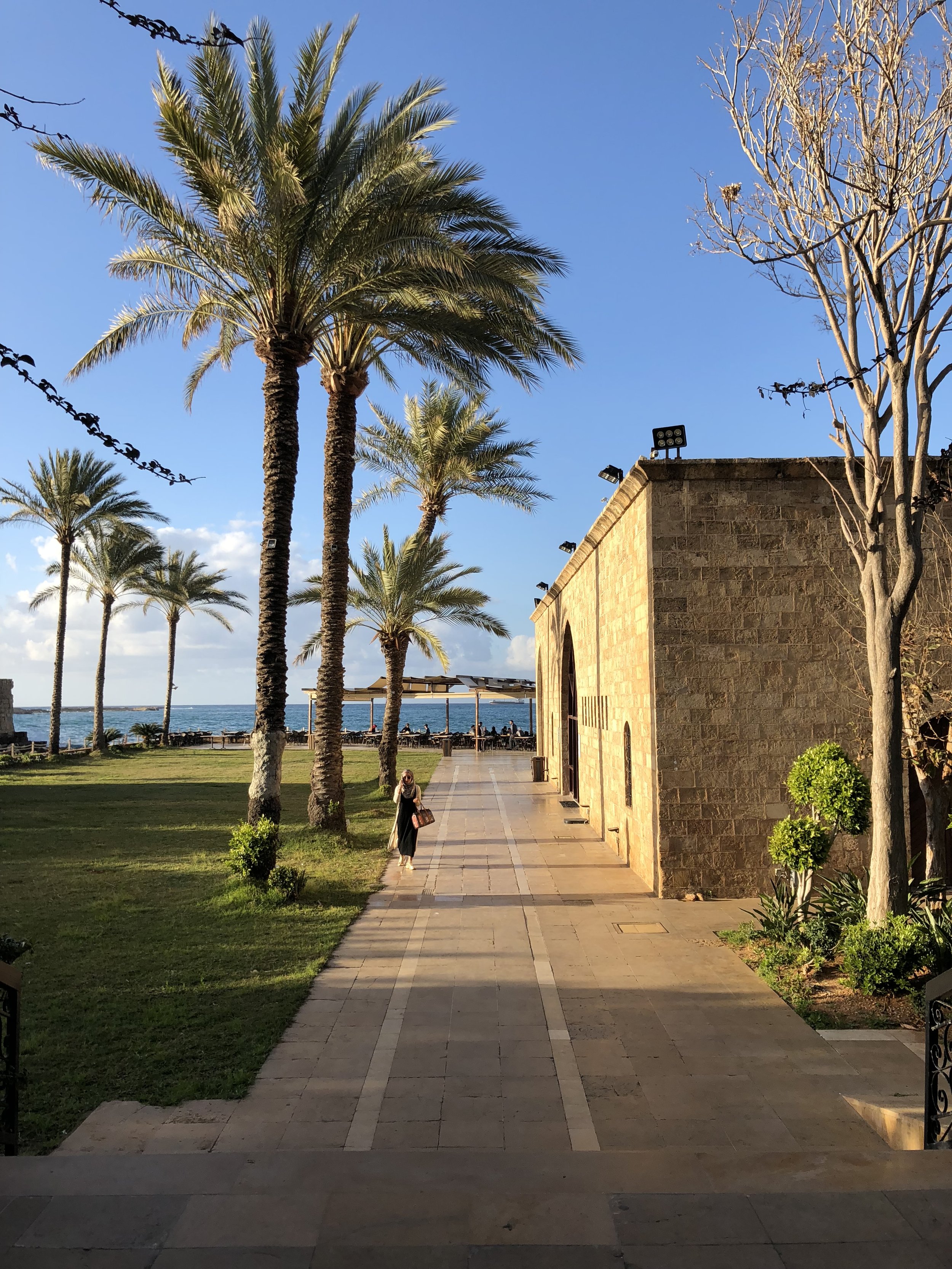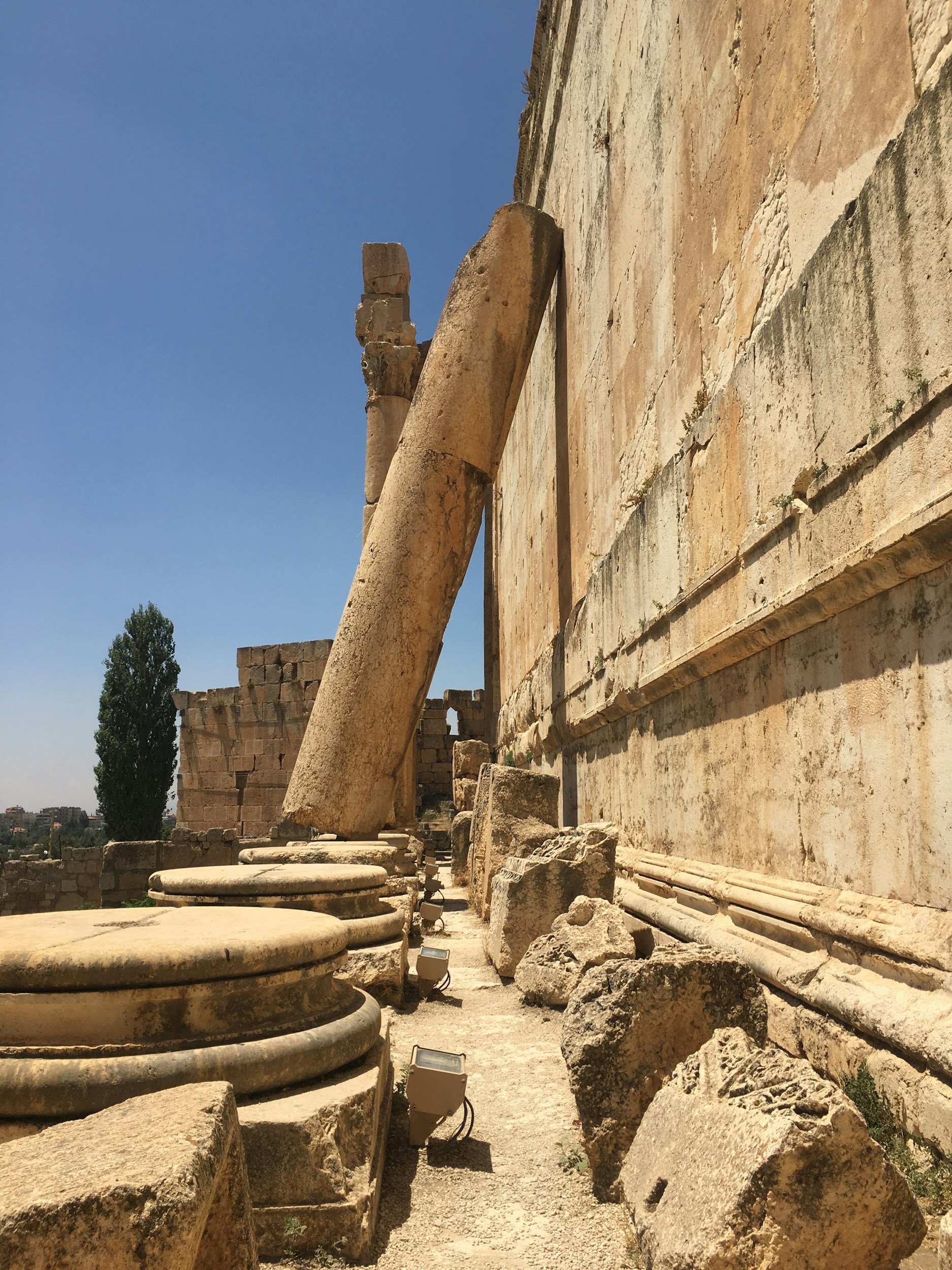My Photography & Travel Guide to Lebanon
Welcome to Lebanon—a country that fits centuries of history, jaw-dropping landscapes, and vibrant culture into a space smaller than Connecticut.
Lebanon is one of those places that defies easy description. It’s a small country, but it holds a staggering range of experiences, cultures, and landscapes. In one day, you can ski snow-covered peaks in the morning and swim in the Mediterranean by afternoon. And in between, you’ll pass Roman ruins, Crusader castles, lush vineyards, lively souks, and cafés that serve some of the best food in the world.
I lived in Lebanon for 22 years, so I know the country very well. I am well aware of the challenges the country has faced, but it holds a special place in my heart.
Saida Castle
The capital, Beirut, is at once gritty and glamorous. It’s a city shaped by resilience—layered with history, scarred by conflict, yet full of life and character. Walk its streets and you’ll see French colonial architecture next to contemporary galleries, or grab a cocktail at a rooftop bar steps from a family-run falafel shop. The nightlife is famously electric, but so is the art, fashion, and intellectual scene. Beirut feels like Paris, Cairo, and Berlin had a wildly creative child.
Batroun
Lebanon is a dream for history lovers and photographers. The Roman ruins of Baalbek are some of the most spectacular in the world—towering columns and intricate carvings that rival anything in Italy or Greece. Byblos is one of the oldest continuously inhabited cities on Earth, where you can wander through layers of Phoenician, Roman, and Crusader history. And in Tyre and Sidon, you can explore ancient harbors and sunken ruins just off the coast.
Tyre
What makes Lebanon truly unforgettable, though, is the people. There’s a culture of generosity and warmth here that feels both deeply rooted and instinctive. Travelers are often surprised by how welcome they feel—whether it’s being invited to share a meal, offered directions with a smile, or drawn into a late-night conversation over coffee and arak.
Pigeon’s Rock Beirut
In short: if you love culture, history, food, photography, and meeting extraordinary people, you’ll fall hard for Lebanon. In this Photography Guide to Lebanon, you'll find travel tips, the best photography spots in Lebanon, and insider advice on how to make the most of your time in this captivating country.
Lebanon’s Incredible History: A Timeline You Can Walk Through
Lebanon isn’t just photogenic—it’s ancient. This small stretch of Mediterranean coast has been continuously inhabited for over 7,000 years. Every city, ruin, and stone tells a layered story, making it a paradise for photographers who appreciate both beauty and context.
This is the land of the Phoenicians, master seafarers who gave us the alphabet. Byblos, one of the world’s oldest continuously inhabited cities, is where the word "Bible" comes from. You'll find Roman temples in Baalbek that rival anything in Italy, Crusader castles looming over harbors, and Ottoman-era souks that still bustle with spice merchants and cobblers.
Baalbek
In the 20th century, Beirut became known as the "Paris of the Middle East"—a melting pot of art, literature, fashion, and political intrigue. Despite the scars left by civil war, the city has reinvented itself as a cultural powerhouse with world-class galleries, street art, and music scenes.
The American University of Beirut
For photographers, Lebanon’s history is more than just a backdrop. It's a living, textured canvas. You’re not just capturing ruins—you’re telling the story of civilizations that built, rebuilt, and still endure.
Must-Visit Historical Highlights:
🏛️ Temple of Jupiter, Baalbek – One of the largest Roman temples ever built.
🏰 Byblos Citadel – Overlooks the ancient port with layers from Crusader, Roman, and Phoenician eras.
🕌 Al-Omari Grand Mosque, Beirut – Once a Crusader cathedral, now a mosque—a perfect symbol of Lebanon’s layered identity.
🧱 Tyre's Roman Hippodrome – One of the best-preserved in the world.
🛕 Moussa Castle – A one-man passion project that turned into a fairy-tale fortress, full of photo ops and oddities.
Downtown -Saifi
Geography That Defies Expectations: Ski in the Morning, Swim by Sunset
One of the most remarkable things about Lebanon is how much natural beauty is packed into such a compact country. In a single day, you can ski down snow-covered mountains in the morning and swim in the Mediterranean by late afternoon.
Jezzine at Sunset
Lebanon's geography is shaped by its rugged Mount Lebanon range, which runs parallel to the coast and rises dramatically from the sea. These peaks, often blanketed in snow from December through early April, are home to ski resorts like Mzaar Kfardebian—the largest in the Middle East—and The Cedars, known for its ancient groves of biblical cedar trees.
Fisherman in Saida
An hour’s drive west takes you to the sun-drenched coast, where cities like Batroun, Byblos, and Tyre offer sandy beaches, seaside ruins, and golden light for photography. It's a rare destination where you can shoot icy peaks in the morning and glowing sea horizons in the evening.
Beirut - Mohammad Al-Amin Mosque
For landscape photographers, the variety is endless:
Qadisha Valley for dramatic cliffs and monasteries.
Tannourine and Baatara Gorge for waterfalls and sinkholes.
Chouf Mountains for terraced villages and cedar forests.
This natural contrast not only makes for stunning photos—it makes travel here feel like a multi-country adventure rolled into one.
South Lebanon
Where to Stay in Lebanon
Best Area to Stay: Base yourself in downtown Beirut, the cosmopolitan capital that offers easy access to coastal views, mountain villages, and cultural sites.
Luxury Hotels in Lebanon (Beirut):
Four Seasons Hotel Beirut – Mediterranean views, a rooftop pool, and unmatched elegance on the Corniche.
Le Gray Beirut – Sleek design, modern amenities, and walking distance to Martyrs' Square.
Kempinski Summerland Hotel & Resort – A beachfront resort experience with luxury spa options.
Beirut - Martyrs' Square
Mid-Level Hotels in Lebanon:
The Smallville Hotel – Modern, artsy, and well-located near the National Museum.
Hotel Albergo – A stylish, boutique option with a rooftop bar and traditional architecture.
Saifi Suites – Comfortable, central, and ideal for easy access to both art districts and photography hotspots.
Jezzine
How Many Days to Spend in Lebanon
For a well-paced itinerary focused on both photography and culture, 7 to 10 days is ideal. Spend 3 days in Beirut, then venture north to Byblos and Tripoli, east to Baalbek, and south to Sidon and Tyre. A day in the Chouf Mountains or the Qadisha Valley adds nature and depth.
Chouf Mountains
Best Time to Visit Lebanon for Photography
The best time to visit Lebanon for photography is spring (April–June) and autumn (September–November). During these seasons, the weather is mild, skies are typically clear, and landscapes bloom or turn golden.
Photographers will appreciate:
Spring: Wildflowers and snow-topped mountains.
Fall: Soft light and fewer tourists.
Bonus: Visit during Beirut Art Week in September or Byblos International Festival in summer for vibrant street scenes and performances.
The Chouf
Getting Around Lebanon
Public transportation is limited, but shared taxis (called service cars) and ride-share apps like Uber and Bolt work well in Beirut. For broader access to remote sites and photography spots, renting a car with GPS is your best bet. My recommendation is not to drive in Lebanon. You should hire a driver. It is much safer and easier and not very expensive.
Saida Crusader Castle
Where to Eat in Lebanon
Lebanese food alone is reason enough to visit. It’s bright, fresh, and full of flavor. Think warm, fluffy manakish with za’atar for breakfast, mezze spreads with creamy hummus, tabbouleh, baba ghanoush, and grilled halloumi, followed by succulent lamb or fresh-caught fish.
Manoushe is a must in Lebanon
Don’t skip the wine—Lebanon’s Bekaa Valley produces award-winning bottles, and many vineyards welcome visitors for tastings and tours. And dessert? Just try saying no to warm knafeh or flaky baklava with orange blossom syrup.
Beirut
The Legendary Food of Lebanon
If you travel for food—and let’s be honest, who doesn’t?—Then Lebanon belongs on your bucket list. Lebanese cuisine is built on freshness, balance, and big flavor. It's the kind of food that tastes like it was made by someone’s grandmother, even in a busy restaurant.
And for photographers, it’s a dream: rich textures, colorful plates, and beautiful natural light from Beirut's many open-air cafés and garden courtyards.
The Legendary Sweets of Tripoli
What to Try:
Mezze in Beirut
Mezze: A spread of small plates like hummus, baba ghanoush, tabbouleh, labneh, and stuffed grape leaves. They're as delicious as they are photogenic.
Manakish: Lebanon’s answer to pizza—flatbread topped with za’atar, cheese, or minced meat. Best shot (and eaten) fresh out of the oven.
Kibbeh: Often called the national dish, it’s a savory mix of bulgur, minced meat, onions, and spices—served raw, fried, or baked.
Fattoush & Tabbouleh: Salads packed with herbs, crispy bread, and citrusy zing.
Grilled meats: Think juicy lamb skewers, shish taouk (marinated chicken), and kafta, served with garlic sauce and fluffy rice.
Baklava & Maamoul: Sweet, flaky pastries filled with nuts or dates—ideal for a coffee break photo set-up.
Arak: A strong anise-flavored spirit typically sipped slowly with meze. Clear until you add water, when it turns milky-white. A visual (and cultural) experience.
You’ll find incredible food at every level—from high-end restaurants in Beirut to roadside shawarma joints in Tripoli. Even a simple breakfast of labneh, olives, cucumbers, and warm bread feels special here.
Beirut by AUB
Recommended Restaurants:
Tawlet Beirut – Farm-to-table traditional dishes in a beautiful rustic setting.
Barbar – A late-night street food staple. Try the shawarma and fatteh.
Em Sherif – Lavish, upscale Lebanese cuisine served in an opulent atmosphere.
Al Falamanki – Relaxed garden setting, perfect for mezze and tea.
Liza Beirut – A favorite for both photography and flavor; chic interiors and incredible food.
Mezze
Best Coffee Shops:
Kalei Coffee Co. – Artisan coffee with hip vibes, ideal for photo editing.
Sip Beirut – Minimalist interiors and stellar flat whites.
Café Younes – Historic and cozy, with a variety of single-origin beans.
Photography Gear to Bring to Lebanon
What camera gear to bring to Lebanon:
The Corniche of Beirut
Camera: Canon EOS R5, Sony A7R V, or Nikon Z8 for high-resolution versatility.
Lenses:
16–35mm for architecture and landscapes.
24–70mm for everyday shooting and portraits.
70–200mm for street photography from a distance and mountain shots.
Accessories:
Travel tripod
ND and polarizing filters
Drone (check local restrictions; use with discretion in cities and historical sites)
Extra batteries—power can be inconsistent in remote areas
The Rest House in Sidon
Best Photography Spots in Lebanon
Here are my recommendations:
Jiyeh
Best time: Golden hour for long shadows on the massive temple columns.
Temple of Jupiter in Baalbek, Lebanon
Best time: Sunset or blue hour; colorful fishing boats and medieval architecture.
Note: Photography is only allowed in some sections; surreal limestone formations.
Best time: Morning mist and spring greenery; ideal for drone photography.
The Qadisha Valley
📍 Pigeon Rocks in Raouché
Best time: Sunset from the Corniche.
Best time: Early morning or late afternoon for rich shadows and active scenes.
Mansouri Great Mosque
Here are a few photos from Byblos, Ehden and Batroun.
Festivals & Cultural Events
Beirut Art Week (September): Street art, exhibitions, and gallery shows.
Byblos International Festival (July): Concerts and performances against ancient backdrops.
Al Bustan Festival (February–March): Classical music and opera near the mountains.
Byblos - St. Jean-Marc Cathedral
Final Thoughts & Call to Action
Lebanon is a country of contrasts—ancient and modern, peaceful and pulsing, rugged and refined. It's not just a destination; it’s a photographic journey that touches your lens and your heart.
If you enjoyed this Photography & Travel Guide to Lebanon, check out my other Photography and Travel Guides here. And if you want more insider tips, camera tricks, and destination guides, subscribe to my newsletter.











































